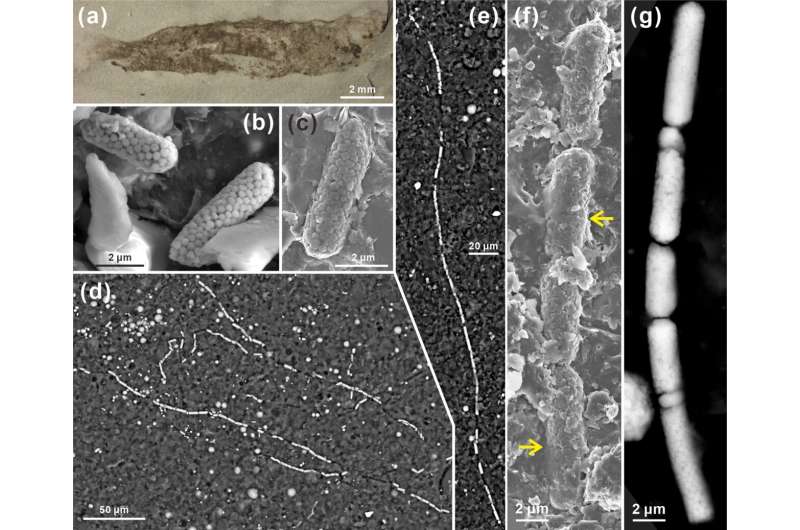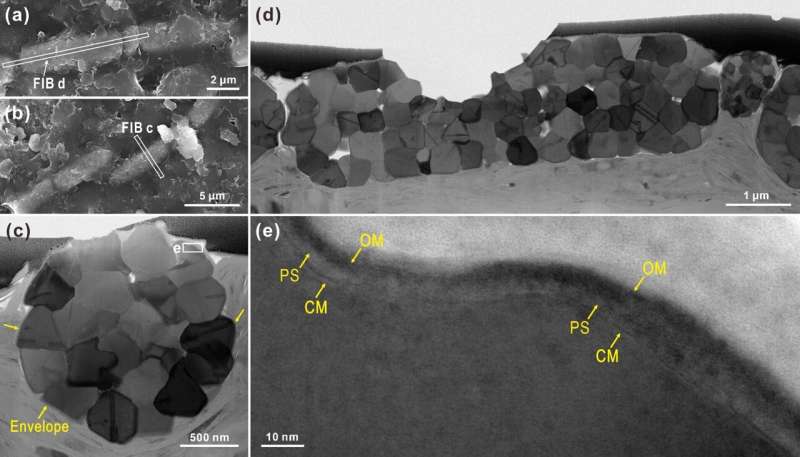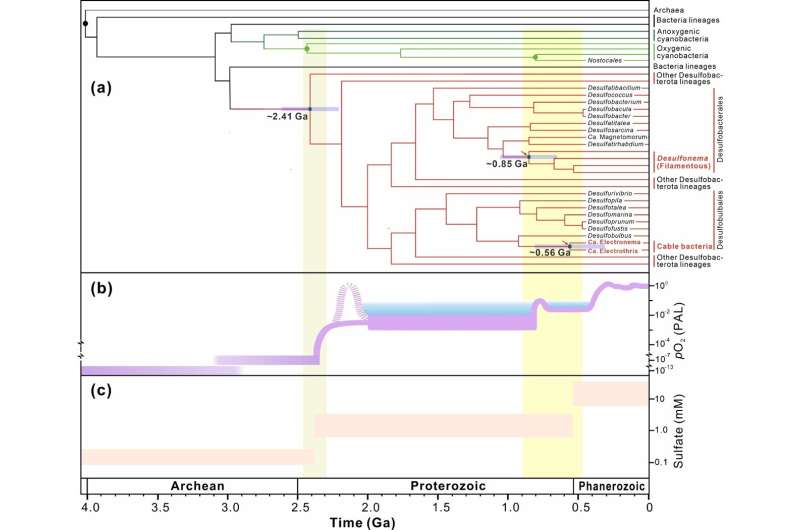This article has been reviewed according to Science X's editorial process and policies. Editors have highlighted the following attributes while ensuring the content's credibility:
fact-checked
trusted source
proofread
Discovery of microfossil in China from the 518-million-year-old Qingjiang biota sheds light on adaptive evolution

Microbial sulfate reduction dating back to the Paleoarchean plays a crucial role in driving global carbon and sulfur cycles in ancient and modern Earth. Over 150 species of sulfate reducers from bacterial and archaeal phyla have been identified across a range of different environments. However, their origin is elusive and unequivocal fossils are lacking.
Recently, a 518-million-year-old microbial fossil from China identified as an ancient sulfate-reducing bacterium has shed light on the adaptive evolution of sulfate-reducing bacteria in response to Earth's oxygenation events. This new fossil, named as Qingjiangonema cambria, is reported by a research team led by Prof. Xingliang Zhang from the Shaanxi Key Laboratory of Early Life and Environments at Northwest University, Prof. Jinhua Li from the Institute of Geology and Geophysics of the Chinese Academy of Sciences (IGGCAS) and Prof. Yinzhao Wang from the School of Life Sciences and Biotechnology at Shanghai Jiao Tong University.
The study is published in the journal Science Bulletin.
Qingjiangonema was discovered in black shales of the Shuijingtuo Formation that yields the Qingjiang biota, an early Cambrian Burgess Shale–type (BST) fossil Lagerstätte of South China. And it appears as a long filament comprising hundreds of rod-shaped cells. Cells are constricted at junctions, ∼1 to 3 μm wide and ∼0.8 to 11.0 μm long.
Each cell is externally enveloped by a trilaminar ultrathin film and internally filled by equimorphic and equidimensional pyrite microcrystals. The unique chain-like morphology and its presence in black shales (cemented anoxic mud), provide crucial clues to determine the biological affinity of Qingjiangonema. The faithful replication of cell morphology by pyrite microcrystals infilling suggests that Qingjiangonema was able to precipitate minerals intracellularly when it was alive.

To further determine the physiology of Qingjiangonema, in situ sulfur isotope analyses of intracellular pyrite microcrystals using Secondary Ion Mass Spectroscopy (SIMS) were carried out, and the results show the intracellular pyrite microcrystals have a light sulfur isotope composition and large isotopic fractionation, which are comparable to that of the modern Desulfonema in anoxic mud.
Interestingly, among the vast array of modern sulfate-reducing bacteria and their relatives, only the members of Desulfonema and cable bacteria within the phylum Desulfobacterota exhibit similar chain-like morphologies. Desulfonema species are filamentous sulfate reducers characterized by reducing sulfate under anoxic conditions with a large sulfur isotope fractionation from sulfate to sulfide.
The cable bacteria, however, are opposite in metabolism. They are aerobic sulfide-oxidizing bacteria well-known for long-distance electron transport over centimeter-scale distances and share canonical sulfate-reducing genes with the members in Desulfobacterota.
Overall, multiple lines of evidence including fossil morphology, living condition assessment and isotope analyses demonstrate that Qingjiangonema was a filamentous multicellular sulfate-reducing microfossil.

The discovery of this remarkable microfossil sheds light on the evolution of sulfate-reducing bacteria and cable bacteria. Phylogenomic and molecular clock analyses confirm an independent origin of multicellularity of Desulfonema and cable bacteria within the phylum Desulfobacterota.
More importantly, these molecular biological analyses infer that Desulfobacterota, encompassing majorities of sulfate-reducing taxa, diverged ~2.4 billion years ago during the Paleoproterozoic Great Oxygenation Event (GOE), while cable bacteria diverged ~0.56 billion years ago during or after Neoproterozoic Oxygenation Event.
Taking together, the authors considered that Qingjiangonema cambria is either akin to Desulfonema or represents a sulfate-reducing ancestor to cable bacteria. They proposed that sulfate-reducing bacteria were first diversified in response to the increase of oceanic sulfate concentrations during the GOE and that sulfur-oxidizing cable bacteria evolved from a filamentous multicellular sulfate-reducing ancestor by reversal of the sulfate reduction pathway when large areas of the seafloor became oxygenated during or after the NOE.
More information: Linhao Cui et al, The Cambrian microfossil Qingjiangonema reveals the co-evolution of sulfate-reducing bacteria and the oxygenation of Earth's surface, Science Bulletin (2024). DOI: 10.1016/j.scib.2024.03.001
Provided by Science China Press




















